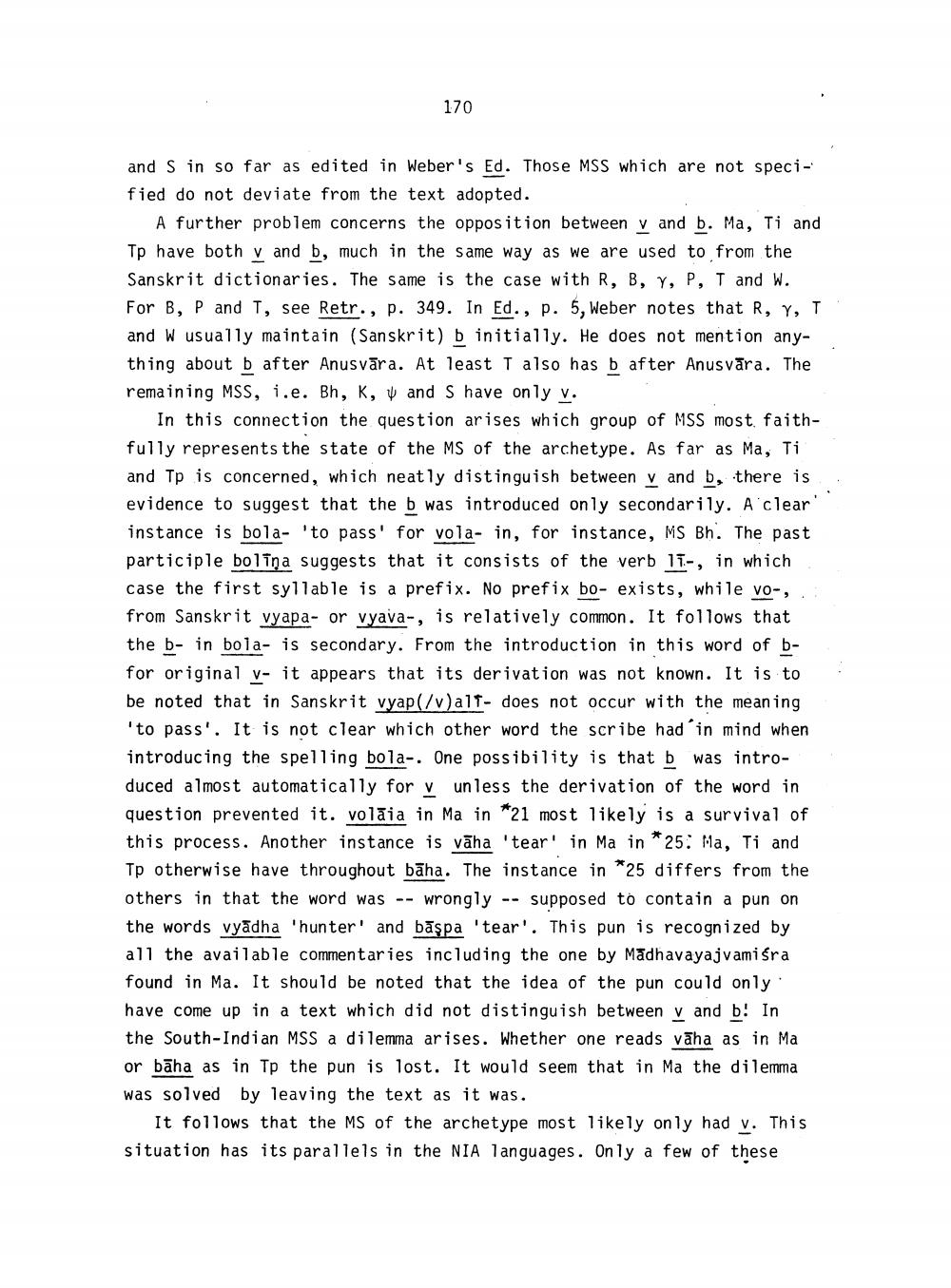________________
170
and S in so far as edited in Weber's Ed. Those MSS which are not specified do not deviate from the text adopted.
A further problem concerns the opposition between v and b. Ma, Ti and Tp have both v and b, much in the same way as we are used to from the Sanskrit dictionaries. The same is the case with R, B, Y, P, T and W. For B, P and T, see Retr., p. 349. In Ed., p. 5, Weber notes that R, Y, T and W usually maintain (Sanskrit) b initially. He does not mention anything about b after Anusvāra. At least T also has b after Anusvāra. The remaining MSS, i.e. Bh, K, and S have only v.
In this connection the question arises which group of MSS most faithfully represents the state of the MS of the archetype. As far as Ma, Ti and Tp is concerned, which neatly distinguish between v and b, there is evidence to suggest that the b was introduced only secondarily. A clear instance is bola- 'to pass' for vola- in, for instance, MS Bh. The past participle boliņa suggests that it consists of the verb 11-, in which case the first syllable is a prefix. No prefix bo- exists, while vo-, from Sanskrit vyapa- or vyava-, is relatively common. It follows that the b- in bola- is secondary. From the introduction in this word of bfor original v- it appears that its derivation was not known. It is to be noted that in Sanskrit vyap (/v) alf- does not occur with the meaning 'to pass'. It is not clear which other word the scribe had in mind when introducing the spelling bola-. One possibility is that b was introduced almost automatically for v unless the derivation of the word in question prevented it. volaia in Ma in 21 most likely is a survival of this process. Another instance is vāha 'tear' in Ma in 25: Ma, Ti and Tp otherwise have throughout baha. The instance in *25 differs from the others in that the word was wrongly supposed to contain a pun on the words vyadha 'hunter and başpa 'tear'. This pun is recognized by all the available commentaries including the one by Madhavayajvamisra found in Ma. It should be noted that the idea of the pun could only have come up in a text which did not distinguish between v and b! In the South-Indian MSS a dilemma arises. Whether one reads vāha as in Ma or baha as in Tp the pun is lost. It would seem that in Ma the dilemma was solved by leaving the text as it was.
It follows that the MS of the archetype most situation has its parallels in the NIA languages.
likely only had v. This Only a few of these




